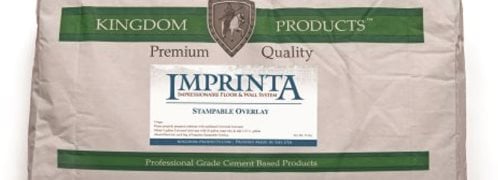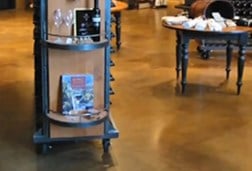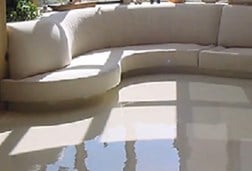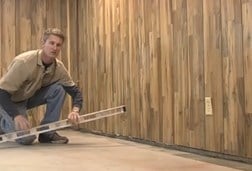- Concrete Overlays Home
- Get the Look - Interior Overlay Pictures
- When to Use a Polymer Overlay
- Comparison Chart of Overlay Systems: Which is best for your project?
- Five Factors to Consider when Choosing a Resurfacing System
- Concrete Overlay Reviews
- Types of Overlays
- Epoxy Coatings
- Microtoppings & Skim Coats
- Self-Leveling Overlays
- Spray-Down Toppings
- Polishable Overlays
- Stamped Concrete Overlays
- Preparing Concrete for Resurfacing
- Concrete Resurfacing
- Reducing Bond Failures Caused by Moisture-Vapor Transmission
- Don't Let Water Vapor Delaminate Your Overlay: How to seal concrete before an overlay
- How-To Tips for Installing Concrete Overlays
- Answers to Common Questions About Concrete Overlays: Advice from expert Chris Sullivan
- How to Add Color to Concrete Overlays
- How to Protect and Maintain Resurfaced Concrete
- Overlay Tools: Seven essential tools for concrete resurfacing
- Related Information
- Concrete Overlay Videos, with Bob Harris
- Decorative Concrete Overlays: A primer of the various overlay types and the decorative possibilities with each
- Vertical Concrete Overlays: Lightweight cement-based overlays mimic stone, brick, and other wall textures
Create Smooth, Durable Floors with Self-Leveling Overlays
These poured-on toppings quickly restore worn concrete and level uneven floorsSelf-leveling overlay systems for concrete floors offer numerous advantages. They can correct uneven floors, repair damaged concrete, and provide a smooth and durable new surface for decorative treatments. These flowable polymer-modified toppings have the ability to self level without troweling, making them a quick solution for smoothing and leveling worn or uneven concrete.
Applications
In many cases, self-leveling toppings serve a purely utilitarian purpose, such as correcting uneven or damaged floors or serving as an underlayment for tile, carpet, or other floor coverings. But you can also use self-leveling overlays for decorative purposes, by adding integral color to the self-leveling system or by enhancing the overlay using stains and dyes. The overlay can be left seamless (except at control joints) or used as a canvas for sawcut or engraved designs. Or you can incorporate decorative inlays, such as strips of wood or metal, by adhering them to the base concrete and then pouring the overlay to the level of the inlay.
How to install
Self-leveling overlays are simply poured or pumped onto the floor surface and then distributed evenly using a spreader. As with other types of overlay systems, proper surface preparation is critical to ensure a strong bond. Most self-levelers are typically applied at thicknesses of 1/4 inch or greater, allowing them to effectively cover minor flaws and compensate for height variances.
Other resources:
Concrete Flooring: Self-Leveling Overlays
Leveling Concrete Floors with a Colored Overlay
Concrete Overlays: Resurfacing Concrete with a Fresh New Look
Options to Cover Concrete Floor Surfaces
Divine Intervention in Concrete Overlay Design
Find Exterior Concrete Resurfacing Supplies
Find Interior Overlay and Topping Supplies
Return to Concrete Overlay Buyer's Guide
 Rapid Set Skim Coat
Repairs, levels, and smooths concrete for applications.
Rapid Set Skim Coat
Repairs, levels, and smooths concrete for applications.
 Thin Micro-Topping
Produces durable surface to color or stain
Thin Micro-Topping
Produces durable surface to color or stain
 Self Leveling Overlay
Find the overlay to meet your project's needs
Self Leveling Overlay
Find the overlay to meet your project's needs
 T1000 Stampable Overlay
For use with resurfacing concrete floors and hardscapes.
T1000 Stampable Overlay
For use with resurfacing concrete floors and hardscapes.
 Kemiko® Buildable Overlay
Decorative interior or exterior resurfacing
Kemiko® Buildable Overlay
Decorative interior or exterior resurfacing
 Flooring & Coating System
Epoxy Flooring System designed for concrete
Flooring & Coating System
Epoxy Flooring System designed for concrete
 Stamped Concrete Overlay
Warm weather and cold weather formulas
Stamped Concrete Overlay
Warm weather and cold weather formulas
 Imprinta Stampable Overlay
2-component system
Imprinta Stampable Overlay
2-component system







